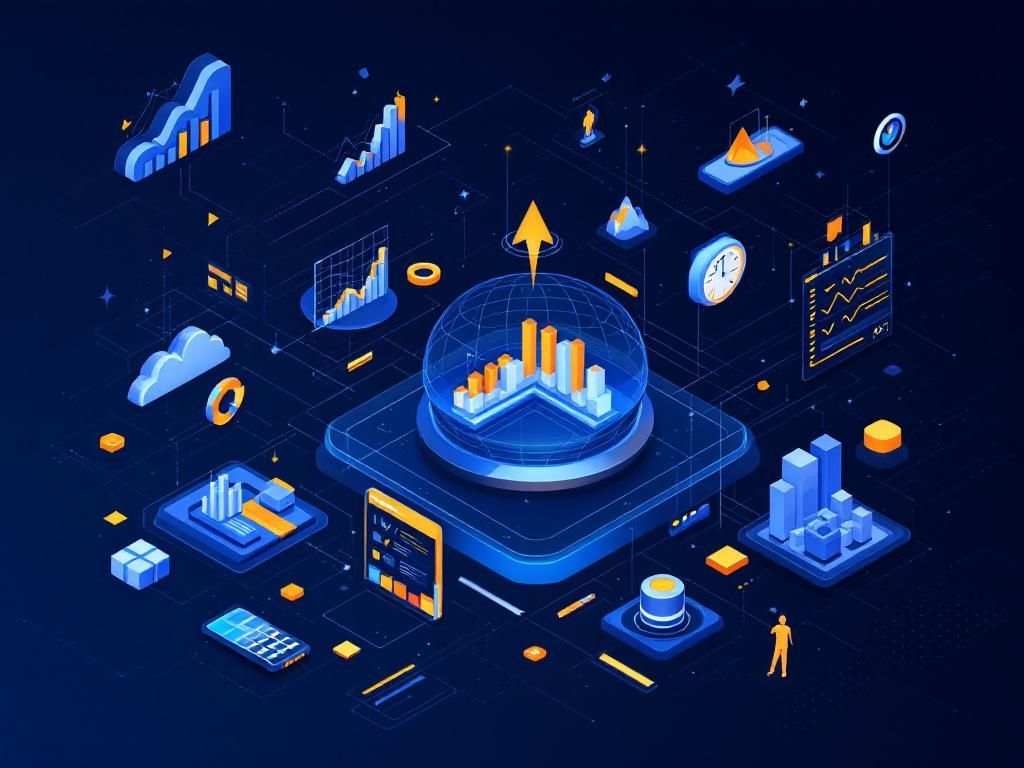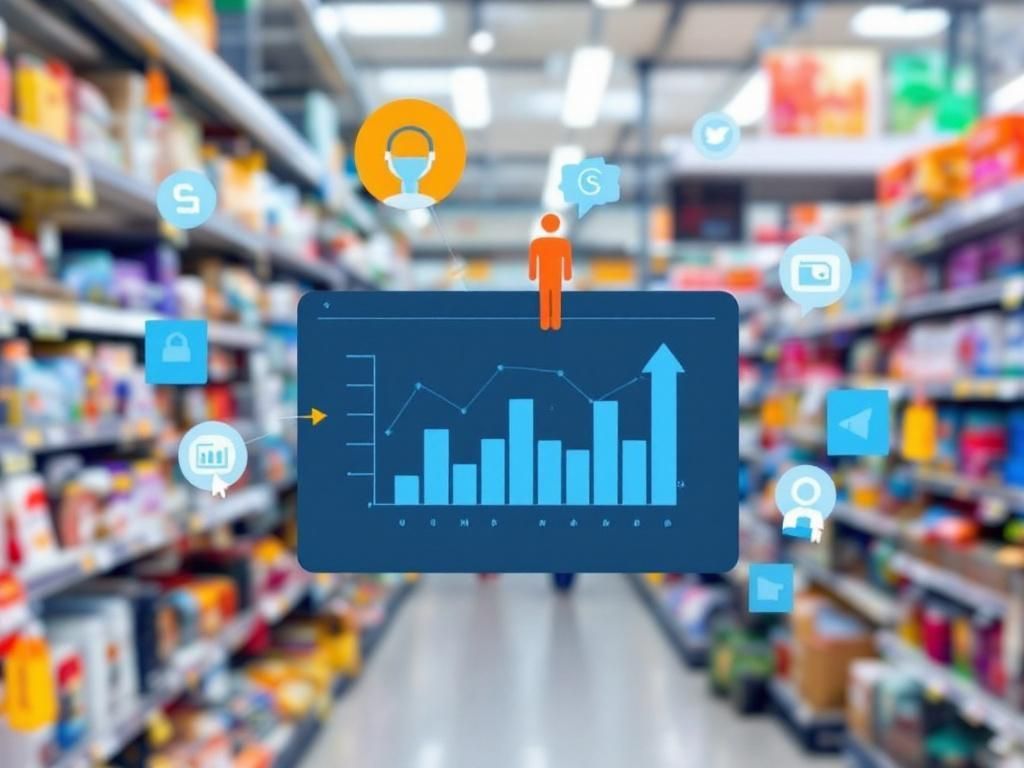As the retail landscape continues to evolve, the integration of predictive analytics has emerged as a game-changing strategy for businesses looking to enhance their operational efficiency, customer satisfaction, and ultimately, profitability. In 2025, the adoption of advanced predictive analytics tools will be paramount for retailers eager to stay ahead of the competition. This article explores the leading predictive analytics tools set to dominate the retail sector, providing insights into their features, benefits, and how they can be leveraged to achieve strategic goals.
Understanding Predictive Analytics in Retail
Predictive analytics utilizes statistical algorithms and machine learning techniques to identify the likelihood of future outcomes based on historical data. In retail, this means leveraging data from various sources, including customer transactions, social media interactions, and supply chain metrics, to forecast trends, optimize inventory, and enhance customer experiences.
Key Benefits of Predictive Analytics for Retailers
- Improved Customer Insights: By analyzing purchasing behavior and preferences, retailers can tailor their offerings to meet consumer demands.
- Enhanced Inventory Management: Predictive analytics aids in forecasting demand, helping to reduce stockouts and overstock situations.
- Optimized Marketing Strategies: Retailers can target their marketing efforts more effectively by predicting customer responses and preferences.
- Increased Operational Efficiency: Anticipating supply chain disruptions or changes in consumer behavior allows retailers to make proactive adjustments.
Leading Predictive Analytics Tools for Retail in 2025
As we look toward 2025, several predictive analytics tools are making waves in the retail sector. Here’s a detailed overview of the top contenders:
1. IBM Watson Analytics
IBM Watson Analytics is a robust platform that leverages AI to provide insights into customer behavior and operational efficiency. Its intuitive interface allows users to explore data through natural language queries.
- Key Features:
- Natural language processing for data queries
- Visual data representation
- Automated predictive modeling
2. SAS Analytics
SAS is a pioneer in analytics software and offers specific solutions tailored for retail. It provides comprehensive tools for managing large datasets and delivering actionable insights.
- Key Features:
- Advanced forecasting models
- Customer segmentation capabilities
- Real-time analytics
3. Microsoft Azure Machine Learning
This cloud-based service enables retailers to build, train, and deploy machine learning models in a scalable environment. It integrates seamlessly with other Microsoft products, making it a popular choice for organizations already using the Microsoft ecosystem.
- Key Features:
- Extensive algorithm library
- Automated machine learning
- Integration with Power BI for enhanced data visualization
4. Google Cloud AI
Google Cloud AI provides a suite of machine learning services that help retailers analyze customer data and predict future trends. Its capabilities include image and speech recognition, which can be particularly useful for enhancing customer interactions.
- Key Features:
- Scalable cloud infrastructure
- Pre-trained models for quick deployment
- AutoML for custom model creation
5. Tableau
Tableau is well-known for its data visualization capabilities, and it also offers predictive analytics features that help retailers identify trends and patterns in their data.
- Key Features:
- User-friendly dashboard creation
- Integration with various data sources
- Advanced analytics functions for forecasting
How to Choose the Right Predictive Analytics Tool
Choosing the right predictive analytics tool for your retail business requires careful consideration. Here are some factors to keep in mind:
- Business Needs: Determine what specific challenges you want the analytics tool to address, whether it’s improving customer insights, enhancing inventory management, or optimizing marketing efforts.
- Integration Capabilities: Ensure that the tool can integrate seamlessly with your existing systems and data sources.
- User-Friendliness: A tool that is easy to use will encourage your team to adopt and leverage it effectively.
- Scalability: As your business grows, so should your analytics tool. Choose one that can scale with your evolving needs.
- Cost: Consider your budget and the potential return on investment from implementing the tool.
Case Studies: Success Stories in Retail Predictive Analytics
To illustrate the impactful results of implementing predictive analytics, let’s look at a couple of case studies:
Case Study 1: Walmart
Walmart has effectively utilized predictive analytics to optimize its supply chain. By analyzing customer buying patterns, the retail giant has been able to predict stock levels needed at various locations, reducing waste and ensuring product availability.
Case Study 2: Target
Target has successfully employed predictive analytics to enhance customer engagement through personalized marketing. By analyzing past purchasing behavior, Target tailors its advertising campaigns to specific customer segments, resulting in increased sales and customer loyalty.
Conclusion
The future of retail is intertwined with the capabilities of predictive analytics. As retailers prepare for the dynamic landscape of 2025, investing in the right tools will be essential for harnessing data to drive strategic decisions. By understanding the top predictive analytics tools available and their unique features, retailers can position themselves for success in an ever-evolving marketplace.
FAQ
What are the top predictive analytics tools for retail in 2025?
Some of the leading predictive analytics tools for retail in 2025 include IBM Watson Analytics, Microsoft Azure Machine Learning, SAS Predictive Analytics, Alteryx, and Tableau.
How can predictive analytics benefit retail businesses?
Predictive analytics can help retail businesses optimize inventory management, enhance customer experience, forecast sales trends, and improve marketing strategies by analyzing data patterns.
What features should I look for in predictive analytics tools for retail?
Key features to look for include ease of use, integration capabilities, data visualization, real-time analytics, machine learning algorithms, and robust reporting functionalities.
Are there any free predictive analytics tools for retail?
Yes, there are free options available such as Google Analytics, R, and Python libraries like Scikit-learn, which can be utilized for predictive analytics in retail.
How does machine learning enhance predictive analytics in retail?
Machine learning enhances predictive analytics by allowing tools to learn from historical data, identify patterns, and make more accurate predictions, leading to better decision-making.
What is the future of predictive analytics in the retail industry?
The future of predictive analytics in retail is expected to involve more advanced AI integration, personalized shopping experiences, real-time data processing, and further automation of decision-making processes.




